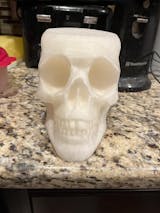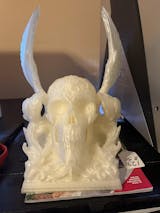Tips for Avoiding ABS Bed Adhesion Issues
ABS has a number of benefits. Parts produced with it can be very strong and resistant to high temperatures. ABS is also dissolvable in acetone, allowing for smoothing parts or gluing parts together using this solvent.
However, ABS can be difficult to print; specifically when it comes to bed adhesion. As the material cools, it tends to warp and curl so it can be tough to get an ABS print to stick to your print bed. Here are some tips for avoiding these bed adhesion issues.
1. Use an enclosure
Using an enclosure when printing with ABS filament is always recommended. In addition to helping to contain the fumes that ABS can release, it helps significantly with bed adhesion. If you don't use an enclosure, any air movement around the print can cause it to cool unevenly and therefore shrink and curl up off the print bed. An enclosure will also keep the temperature around the part elevated, reducing the amount of shrinkage. It can be very difficult to print ABS without an enclosure so at Coex 3D we always recommend using one.
2. Set the proper bed temperature
ABS requires a relatively hot print bed. PLA filament is usually happy with a bed temperature of 40°C - 60°C, but for ABS you'll need a bed temperature of around 85°C - 100°C. As always, safety first, at these heat levels the bed is dangerously hot and can cause burns. Be sure to take care around the heated print bed and keep the printer out of reach of children or pets.
3. Use the right bed material
The material your print bed is made of makes a big difference when it comes to ABS bed adhesion. Textured and smooth PEI work very well for printing with ABS. In fact, smooth PEI can work a bit too well, causing the ABS to stick much too strongly to it. We'd recommend using glue stick or Magigoo when printing ABS on a smooth PEI sheet.
Printing on a glass bed also works, in which case glue stick or Magigoo can be helpful to ensure the print properly sticks down onto the print bed.
BuildTak, kapton tape and painters tape are also options you can use, and work well combined with glue stick or Magigoo.
4. Print with a brim
Your slicer will have an option to add a "brim" to this print. This is extra material that "widens" the first layer of a print, giving it a larger surface area that is in contact with the print bed. In many cases, this can help reduce bed adhesion and warping issues and can be helpful when printing with ABS. A brim width of 5-10mm is recommended depending on the severity of warping.
5. Consider making an "ABS slurry"
Warning: Take care around acetone and only handle it while wearing gloves and while in a well-ventillated area. Acetone is toxic and should be handled with great care.
One option for improving bed adhesion is an ABS "slurry". Since acetone can dissolve ABS, it can be used to create this slurry. To use this method, chop up some ABS filament into small pieces and dissolve it in acetone (be sure not to mix it in a plastic cup!), stir and work it together until it forms a thin paste. Then, brush this slurry onto your 3D print bed and let it sit until the acetone has dissolved away. This will leave you with a thin, even coating of ABS on the print bed. Then, just print on it as normal!




